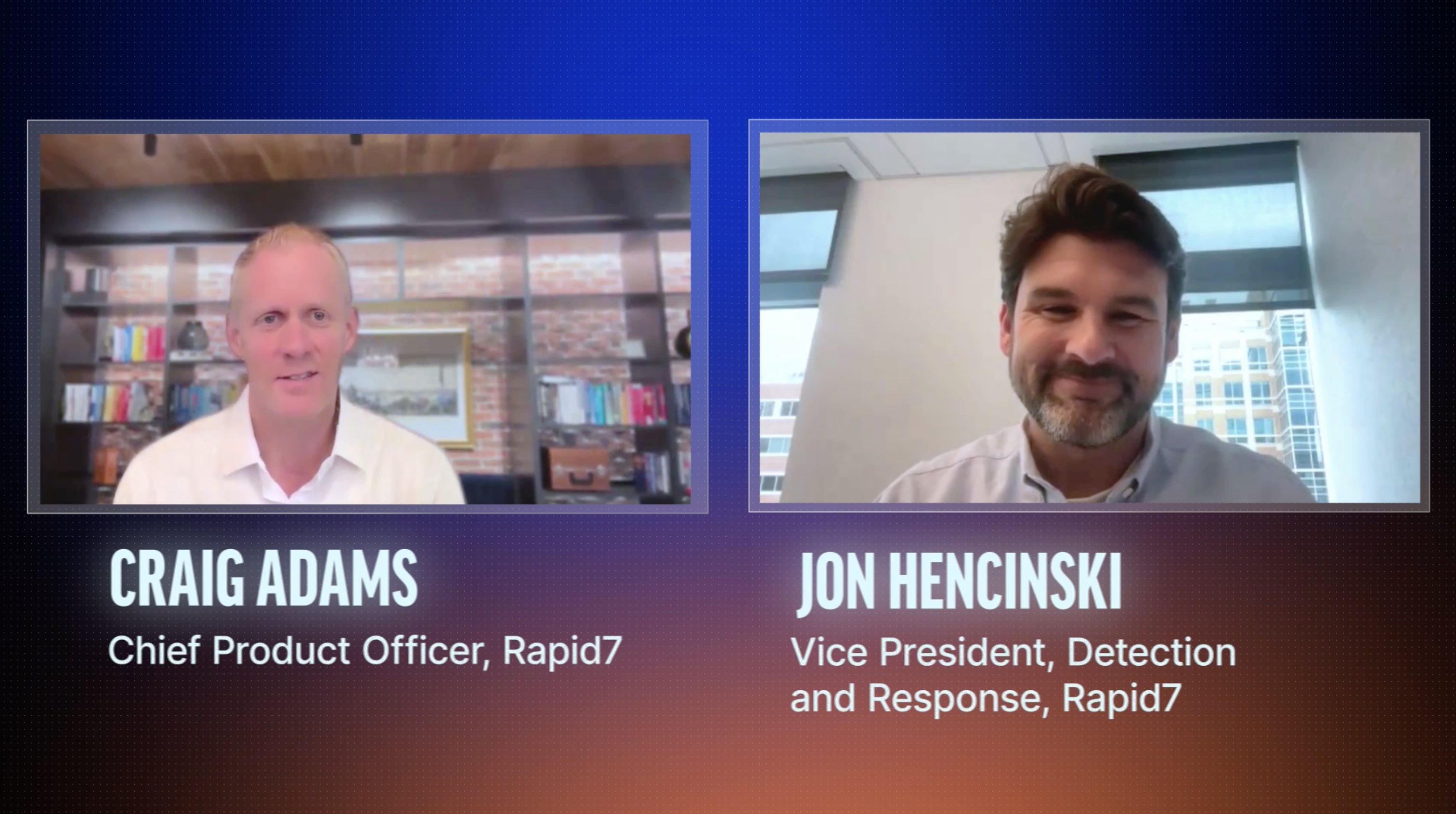What does it actually take to stay ahead of attackers in 2025?
In the second episode of Experts on Experts: Commanding Perspectives (you can catch the first one here!), Chief Product Officer Craig Adams sits down with Jon Hencinski, VP of MDR at Rapid7, to get a behind-the-scenes view of how the SOC is evolving in real time.
They cover topics that go beyond traditional detection and response: alert fatigue, the role of AI, hiring for curiosity over credentials, and how MDR has matured from triage center to strategic partner.
Here are just a few of the takeaways from the episode:
The SOC runs on human time. AI can help compress decision cycles and reduce triage fatigue, but as Jon explains, human analysts are still essential to driving real outcomes, especially when it comes to context, customer communication, and remediation.
MDR is getting proactive. Jon outlines how his team isn’t just cleaning up alerts, they’re helping customers avoid them entirely by identifying weak points and recommending changes before the breach.
Threat hunting starts with better questions. Jon talks about how threat actors like Scattered Spider are bypassing traditional controls, and why modern hunting is about finding what your SIEM would never flag.
Visibility still comes first. No matter how good your detections are, if you don’t have coverage across endpoints, identity, SaaS configs, and cloud telemetry, you’re flying blind.
Empathy builds stronger teams. Whether you’re leading a SOC or just starting your career in security, Jon’s perspective on empathy, hiring, and teamwork is a reminder that culture impacts outcomes, especially in high-pressure environments.
Ready to dig in? Watch the latest episode on our YouTube here.

Missed Episode 1 with Laura Ellis on Agentic AI?
Catch up on autonomous systems, governance, and the risks of AI-on-AI interaction here.
